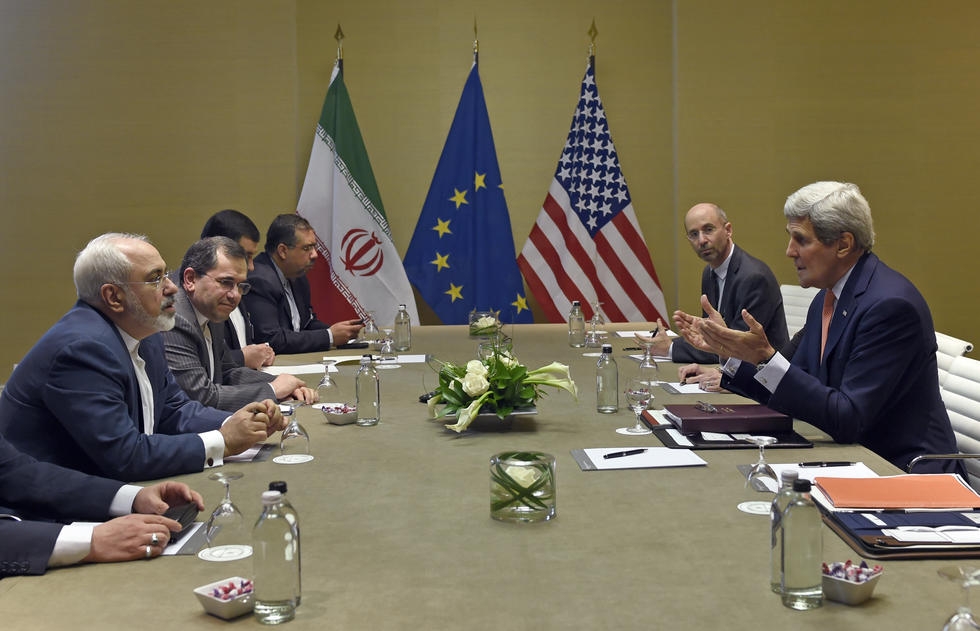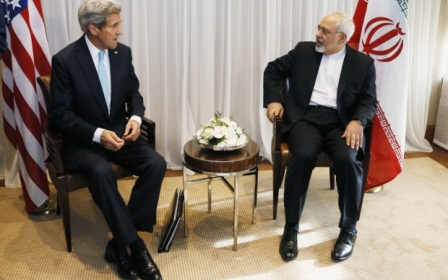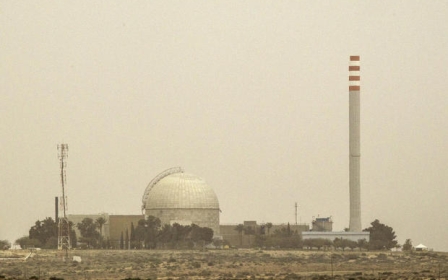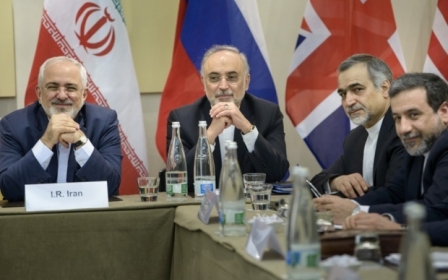What if the Iran nuclear talks fall apart?

While many signs justify optimism about the Iran nuclear deal – the relentless efforts and determination of United States Secretary of State John Kerry, for example – there still remain a number of unresolved issues that may yet scuttle the prospects of a final accord.
Meanwhile, there are forces inside Iran and the US, as well as in the region, which vehemently oppose a nuclear deal. The following analysis will seek to answer the question of what will happen if the talks fail.
Changes at Iran’s domestic level
Since the 1989 death of the Iranian Revolution’s leader, Ayatollah Ruhollah Khomeini, two major political currents have been competing with each other within the Iranian nezam (establishment). These are the radical and revolutionary camp led by Iran’s Supreme Leader, Ayatollah Ali Khamenei, and the moderate and pragmatic camp led by former president, Ayatollah Akbar Hashemi Rafsanjani. In addition, each of these schools of thought have sub-currents. For example, the ultra-conservatives and hardliners who are categorically opposed to any negotiations with the US support the Leader, while reformists, not precisely in line with Rafsanjani, support his strategies.
Among the list of the issues that divides the two currents, relations with the United States stand out. Khamenei believes that restoration of ties with America will accelerate the promotion of American values and consequently erode the ideological foundation of the system. He also argues that official diplomatic relations will facilitate the creation of covert links between the Americans, and those who are prepared to cooperate with them to undermine the Iranian regime.
Moderates and pragmatists maintain that no stable political system can be permanently hostile toward America, a super power.
It is in this context that radicals view a nuclear deal as a potential threat. To them, a deal could pave the path toward normalisation of relations with the United States.
In a recent statement, unprecedented in its tone, the IRGC-controlled Imam Hussein University (IHU), where IRGC theorists teach, accused the moderates’ camp of promoting “liberalist literature” and being soft against the US’s avarice. The statement threatened them with “revolutionary confrontation”.
Three days later, Ayatollah Khamenei - echoing and probably supporting IHU’s statement - warned about a current in the country which tries to “introduce Imam [Khomeini] as a liberal person”.
If a nuclear deal does materialise, the two camps’ significant differences will not reside. But a failure of talks would result in drastic developments in Iran.
Rouhani and his camp’s fate are tied to the outcome of the nuclear talks. A breakdown of talks would mark the return of radical politics and the pattern of previous years, whereby Tehran would expand its nuclear program and would in turn be greeted with tougher US sanctions.
The best-case political scenario for Rouhani and his foreign minister, Javad Zarif, would be their being pushed to the sidelines. More likely would be the downfall of Zarif.
Economically, a failure of talks would result in a situation similar to 2012, when the toughest of the European and American sanctions hit. The rial, Iran’s currency, would be jolted from its already shaky foundation followed by another explosion of inflation.
In addition, the system would be threatened on two fronts: externally by military attacks from the Americans and Israelis, and internally to social unrests spurred by rampant inflation.
This situation would force a further Iranian securitization, which would reverse the more open and less securitized society Rouhani has sought to establish.
Changes at the regional level
Since King Salman acceded to the Saudi throne in January, the Iran-Saudi conflict has entered a new phase. While for years the rivalry was defined by cold war tactics, it has now elevated to an open, indirect military confrontation in Syria and Yemen.
Obama’s new doctrine to overcome the crises in the Middle East aims to end the tensions in the region and resolve its devastating conflicts, which “will require a broader dialogue — one that includes Iran and its GCC neighbours”.
If the talks fail and communication between Iran and America is halted, the likelihood of the escalation of Iran-Saudi hostilities would be high, given the growing unpredictability of the Saudis. In such an eventuality, the proxy wars between the two countries would most likely intensify and risk dragging them into a direct military confrontation.
Meanwhile, the hidden competition between Iran and the US in Iraq could contribute to further destabilisation of the country.
More importantly, Israel may view the new hostile environment a golden opportunity to actualise the unthinkable: a military strike on Iran’s nuclear facilities. This is now more likely than ever, given the recently revealed covert cooperation between Israelis and Saudis to thwart Iran.
Changes at the international level
Should the talks collapse, the West - in particular the US - could move to establish a de facto oil embargo. Despite the consequences of likely sanctions, disastrous as they might be, Iran will not surrender to Western pressure.
Ideological principles aside, Ayatollah Khamenei’s rationale is that submitting to coercion would open the door to more coercion and demands of concessions by the US. He argues that as soon as the US concludes that sanctions are working, they will impose more sanctions in pursuit of their primary goal, toppling the regime.
For the US, this scenario would leave only military options in halting Iran’s nuclear program. But according to some credible reports, a military strike could at best set back Iran’s nuclear program no more than four years, increase the likelihood of Iran becoming a nuclear state and would likely destabilise the global economy. Costing many lives, a US military strike would likely result in unintended and unpredictable consequences.
A total breakdown of a nuclear deal would be grim for all parties involved. That alone could be a strong motivator for all parties to strike a deal.
This columnist recently asked Kenneth Katzman, renowned congressional Iran expert, what the likelihood of reaching an agreement on Iran's nuclear program is. “I assess the likelihood of finalising the nuclear deal at about 80 percent,” Katzman said in an email. To the next question - “Do you think a nuclear deal is possible by June 30 deadline?” - he responded, “Yes I do.”
- Shahir Shahidsaless is a political analyst and freelance journalist writing primarily about Iranian domestic and foreign affairs. He is also the co-author of “Iran and the United States: An Insider’s View on the Failed Past and the Road to Peace,” published in May 2014.
The views expressed in this article belong to the author and do not necessarily reflect the editorial policy of Middle East Eye.
US Secretary of State John Kerry talks with Iranian Foreign Minister Mohammad Javad Zarif on 30 May in Geneva 9 (AFP)
Middle East Eye propose une couverture et une analyse indépendantes et incomparables du Moyen-Orient, de l’Afrique du Nord et d’autres régions du monde. Pour en savoir plus sur la reprise de ce contenu et les frais qui s’appliquent, veuillez remplir ce formulaire [en anglais]. Pour en savoir plus sur MEE, cliquez ici [en anglais].





